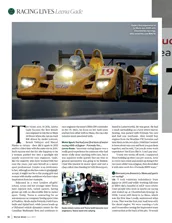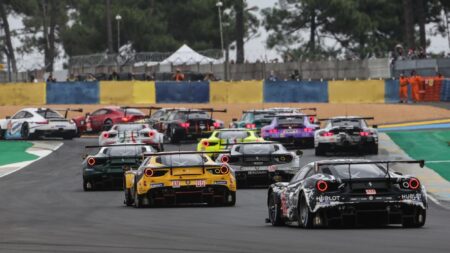Gade was in her first full season of calling the shots: she had joined the Audi programme after a chance meeting with lead engineer Howden Haynes; had impressed in her role as his assistant; and drivers had backed her for promotion when a vacancy opened up.
“We’d done the odd test but we hadn’t done much together and didn’t know each other very well,” Gade says in the July 2021 issue of Motor Sport. “As the third car that year [the drivers] were realistic about their chances at Le Mans.”
Before the race, Gade was in demand, fielding questions about being a female in a male-dominated role.
Before long, she was spearheading the Audi charge.
First, Allan McNish was tapped by a Ferrari and flung into the tyre barriers, as his car disintegrated around him. Then, Mike Rockenfeller’s Audi was swiped by another Ferrari in another display of dramatic destruction.
“13 seconds is still quite a lot, guys, even after 24 hours.”
Both drivers escaped unharmed, leaving the remaining sister car to single-handedly battle four Peugeots.
It was a thriller, as the lead chopped and changed, with the gap rarely larger than half a minute. And then it came to a crunch in the final laps, as Simon Pagenaud in the lead Peugeot and Lotterer came in at the same time. A slow puncture delayed Audi as the crew changed tyres as well as refuelling.
“On the live feed you could see the Peugeot garage giggling because I think they thought they’d done it, but all of a sudden we changed tyres and left the pits with a gap of five, six or seven seconds on fresh rubber,” said Gade. “They glanced back on the live feed to the Peugeot garage and you could see their faces – and then the gap started to increase. Then the Peugeot guys started crying – and I giggled. Really immature.




